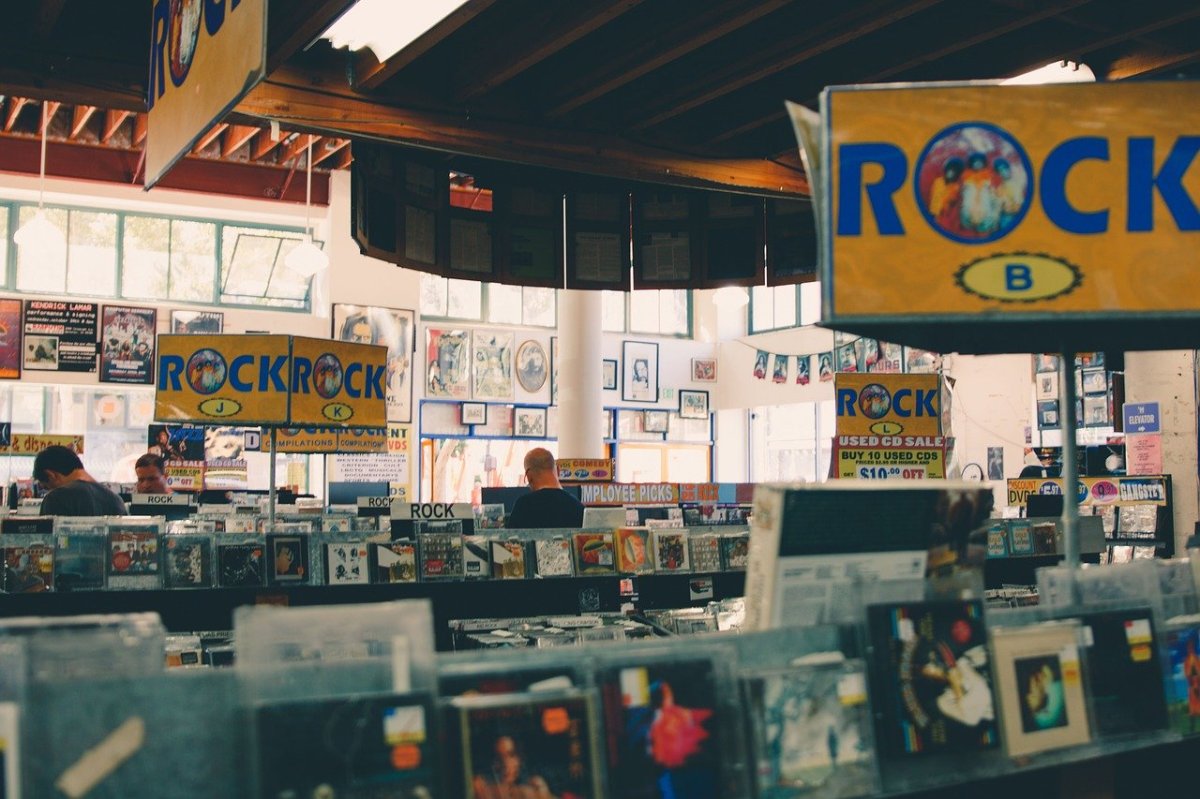Gather ‘round, all you children, and I shall tell you a tale about this fossil of media pictured below.

This artifact is a compact disc, also known as CD, a self-titled album by a forgotten early 00s band called Radford. Way back in ye olde days of the 90s and into the 00s, there used to be a brick-and-mortar store called Circuit City. (Gah, anyone else remember Circuit City?) Because it took approximately 10,000 hours for even a picture to load on a webpage in order to browse music – as we were hiking uphill in the snow both ways to school – we instead went to physical places that sold CDs, which would usually display a few kiosks with the newest album releases loaded up, and headphones allowing you to sample said albums to your heart’s content. The highlight of every month for me was a trip to Circuit City to don those headphones and discover random new bands. (Ah, those golden years before my anxiety disorder began to manifest as germophobia…)
In the year 2000, on one such trip, I discovered this self-titled album by a band named Radford and, in the way of young teens, promptly became somewhat obsessed with it. (Who can say why. It’s not a particularly great album. Though I do still think “Closer to Myself” and “Overflow” are solid Oasis/Fuel hybrid tunes.) Also in the way of young teens, I then lost the CD and moved on to obsessions with other bands. Two years later, in a used CD store (still a viable business option at that point), I found the exact CD you see in this photograph (that I just took and loaded here from my telephone through wireless internet and am now sharing with who knows how many of you, because THAT kind of witchery is possible now) and fondly remembered my love for the album. I rediscovered it for a little while.
To this day, I still haven’t managed to trash/give away a whole bunch of CDs that I never listen to anymore, due to nostalgia or laziness.
Flash cut to 2022. Music streaming and the internet have liberated both music makers and music listeners from the tyranny of gatekeeping record companies, album deals, etc. I find that, of all songs, Radford’s “Closer to Myself” is suddenly stuck in my head. (Hey, it was a refreshing change from “We Don’t Talk about Bruno.”) Filled with a rush of fondness for my youthful music tastes, I rush to Spotify to find the song.
It’s not there. The album isn’t there. It isn’t on Apple Music, either. Or Amazon. Radford’s underwhelming second album is widely available, but for whatever reason — probably rights-related — songs from their debut are not. I go hunting, and far as I can determine, the only way to access these songs in our new online music landscape are to find user-made YouTube videos of the tracks. If I hadn’t failed to get around to ditching this 20-year-old piece of technology, I’d have to watch a stupid YouTube ad every time I wanted to hear one of these songs. It’s not a massive loss to the musical canon or anything, but still.
ALL THIS TO SAY. (Let’s bring this back to books like I promised, shall we?) Using digital copies of the work that you love is great. They are handy, and portable, and don’t take up space. But it helps to remember that they aren’t, strictly speaking, yours. The world of copyright and permissions, not to mention the world of entertainment corporate mergers, is a giant cesspool of fuckery, and while it feels as though the world’s entire listening and reading catalog is available to you online…some things do fall things through the cracks. So if you love something and think you might want to enjoy it or return to it decades down the road? Get yourself a physical copy. Because those who truly own it may not love it like you do, and you may not have access to it later. (Yes, I mean even from library.)

